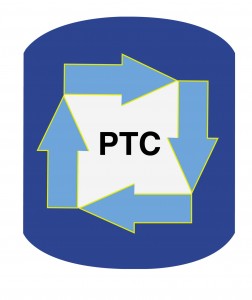This impressive new May 2016 patent highlights one of the most obscure though useful strengths of phase-transfer catalysis. Phase-transfer catalysis is known to excel in transferring anions into non-polar and moderately polar organic solvents and greatly enhance their reactivity in those solvents. Less known is that PTC can transfer polar neutral molecules with hydrogen bonding functional groups, into organic non-polar and moderately polar organic solvents and greatly enhance their reactivity in those solvents. In this case, urea is reacted with isobutyraldehyde.
Urea is highly polar and dissolves in water but doesn’t dissolve in most common organic solvents. Although not cited in the patent, we speculate that the role of the quaternary ammonium phase-transfer catalyst is to hydrogen bond with the urea and make it available to the less polar isobutyraldehyde reactant (which is also the organic phase). At the end of the reaction, the inexpensive quat remains in the aqueous phase for easy separation from the solid product.
Prior art for this reaction uses sulfuric acid and phosphoric acid added in an alternating manner at temperatures between 60 C and 100 C and requires an additional unit operation of neutralization with hydroxide. Materials of construction must resist corrosion. In contrast, the PTC process uses benzyl trimethyl ammonium chloride (though benzyl triethyl ammonium chloride is cited in the abstract) at a temperature of only 40 C and no corrosion. Compare these results described in US patents 3962329 and 9340495.
Using the same mole ratios of BTMAC catalyst as sulfuric/phosphoric acid catalyst and at 40C, the conversion with BTMAC was 100% at 20 min while the mixed acids gave 0% at 30 min.
PTC Organics has experience dissolving insoluble amines and other neutral molecules in organic reaction phases to achieve low-cost high-performance green chemistry.
Now contact Dr. Marc Halpern of PTC Organics to explore integrating PTC Organics’ highly specialized expertise in industrial phase-transfer catalysis with your process development goals to increase profit and R&D efficiency.


